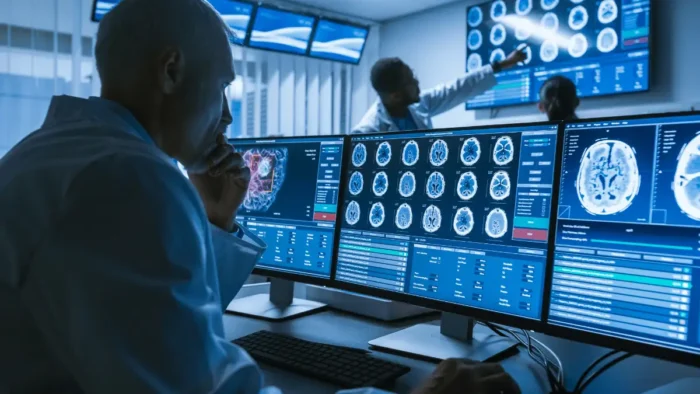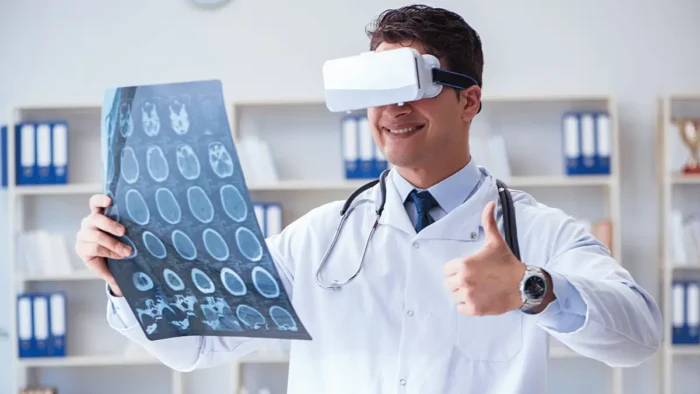Running a medical imaging center demands precision, organization, and a keen understanding of medical and administrative processes. Whether you’re just starting or looking to optimize your existing center, adopting smart guidelines can streamline operations, enhance patient care, and drive success.
Here are essential strategies to run your medical imaging center efficiently.
Automate Documentation for a Paperless Practice
You can streamline charting, reporting, and record-keeping tasks by implementing electronic medical record (EMR) systems and digital documentation tools.
For a specialized solution, include a Radiology Information System to facilitate radiology workflow, manage image archives, and integrate with other center’s information systems for seamless data exchange and comprehensive patient care coordination.
With electronic documentation, patient records are easily searchable. They can be securely accessed from anywhere, facilitating seamless collaboration between healthcare providers and ensuring continuity of care.
Prioritize Staff Training and Development
Your staff is the face of your imaging center and plays a pivotal role in delivering quality care. Prioritize ongoing training and development programs to update your team with the latest techniques and safety protocols. Encourage certifications and continued education opportunities to empower your staff and foster a culture of excellence.
Well-trained personnel improve patient outcomes and contribute to a positive reputation for your center.
- Continuous Learning Opportunities: Regular training sessions, workshops, and educational resources allow your staff to stay updated with the latest advancements in imaging technology and medical protocols. Encourage participation in professional development activities and provide incentives for obtaining relevant certifications. Investing in team members’ growth helps your team to deliver superior patient care and adapt to evolving industry trends.
- Cross-Training Initiatives: Cross-training employees in various roles within the imaging center promotes versatility and flexibility in staffing. Cross-trained staff can efficiently cover for any absences, alleviate workload fluctuations, and facilitate smoother transitions during peak times. Moreover, exposure to different aspects of the center enhances employees’ understanding of its operations and enables a collaborative work environment.
- Mentorship Programs: Establishing mentorship programs by mixing experienced staff with newer hires, facilitating knowledge transfer and skill development. Mentors can provide guidance, share best practices, and offer constructive feedback, accelerating the professional growth of mentees. These programs also promote team cohesion and create a supportive network within the imaging center, boosting morale and job satisfaction.
- Performance Recognition and Feedback: Recognizing and rewarding exceptional performance motivates your employees to strive for excellence continually. You must implement systems for acknowledging achievements through verbal praise, awards, or performance bonuses. Additionally, you can provide constructive feedback and performance evaluations to identify areas for improvement and facilitate ongoing skill development.

Streamline Administrative Processes
Efficient administrative processes are essential for the smooth functioning of your imaging center. Implementing electronic medical records (EMR) systems and scheduling software can simplify your processes for appointment booking, patient intake, and billing procedures.
Automation reduces the likelihood of errors and frees staff to focus on patient care. Regularly review and refine administrative workflows to identify bottlenecks and areas for improvement.
Embrace Telemedicine and Remote Consultations
Telemedicine has revolutionized healthcare delivery, offering convenient access to specialist consultations and follow-up care.
Suppose you incorporate telemedicine into your imaging center. In that case, it allows you to expand your reach and offer services to patients in so-called remote areas.
Remote consultations simplify collaboration between radiologists and referring physicians in such a way that leads to faster diagnoses and treatment planning. But, you must ensure compliance with privacy regulations and invest in secure communication platforms to protect patient data.
Focus on Patient Experience
Providing exceptional patient experiences should be a top priority for your imaging center. From the moment a patient walks through the door to post-exam follow-up, every interaction should be characterized by empathy, professionalism, and efficiency.
You must create a welcoming environment, communicate clearly with patients about procedures and expectations, and continually request feedback to improve your service quality. A positive patient experience enables patient loyalty and generates positive word-of-mouth referrals.
Stay Compliant with Regulations
Compliance with regulatory requirements is non-negotiable in the healthcare industry.
It will help if you stay up-to-date with updates to HIPAA, the FDA, and other relevant regulations governing medical imaging centers. So, conduct regular audits to ensure compliance with standards for equipment maintenance, patient privacy, and radiation safety. Also, it would be best to implement robust data security measures to protect patient information and reduce the possible risks of breaches.
Conclusion
Running a thriving medical imaging center requires a strategic approach prioritizing clinical excellence and operational efficiency. Investing in cutting-edge technology, prioritizing staff training, simplifying administrative processes, adopting telemedicine, focusing on patient experience, and maintaining compliance with regulations can ensure your center’s long-term success and sustainability.
Implementing these smart guidelines will improve patient care and position your imaging center as a leader in the healthcare industry.





